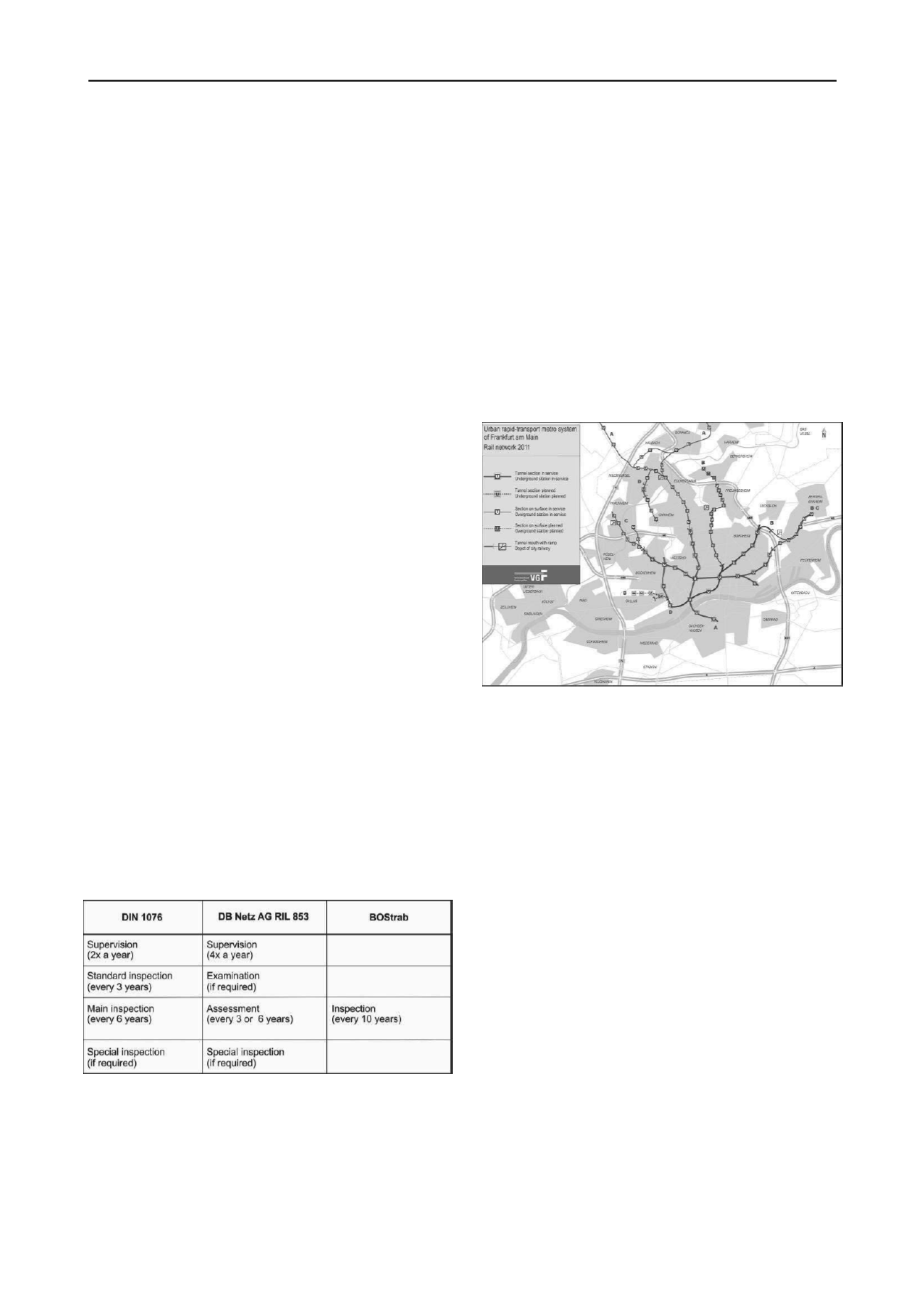
1728
Proceedings of the 18
th
International Conference on Soil Mechanics and Geotechnical Engineering, Paris 2013
The maintenance costs and the status of a structure are strongly
related and are shown in Figure 1 (Wicke et al. 2001). To
achieve a constant status of a structure (line A´) the
maintenance costs of line A are necessary. If less maintenance
costs are spent (line B) the status of a structure is decreasing
(line B´) until the structure is useless. To avoid a total damage
of the structure at a late point of time (line C´) enormous
maintenance costs are necessary (line C). In this case the
maintenance costs are much higher than the savings before.
The objective of the continuous inspection and supervision is
the economic supply and maintenance of the structures. This
means a long-term indemnification of stability, traffic safety
and durability. The maintenance costs and the status of a
structure are strongly related and are shown in Figure 1 (Wicke
et al. 2001).
To achieve a constant status of a structure (line A´) the
maintenance costs of line A are necessary. If less maintenance
costs are spent (line B) the status of a structure is decreasing
(line B´) until the structure is useless. To avoid a total damage
of the structure at a late point of time (line C´) enormous
maintenance costs are necessary (line C). In this case the
maintenance costs are much higher than the savings before.
For engineering inspection and supervision of tunnels and
underground stations of urban metro systems no standards and
regulations
are
defined
(Verband
Deutscher
Verkehrsunternehmen 2005). Depending on the type of
construction, age, status, load impact and the soil and
groundwater
conditions
for
different
underground
infrastructures results a different scope of engineering
inspection and supervision. Regarding this fact cities like
Berlin, Hamburg, Essen and Vienna developed their own
regulations. These regulations base on:
DIN 1076 (Deutsches Institut für Normung 1999)
BOStrab (Bundesministerium für Verkehr 2007)
RiL 853 (DB Netz AG 2011)
SIA 469 (Schweizerischer Ingenieur- und Architektenverein
1997)
The terms, time periods and the scope of the engineering
inspection and supervision are different in the standards and
regulations mentioned above. For tunnels and underground
stations of urban metro systems the time periods and the scope
standards are defined in DIN 1076, BOStrab and RiL 853.
According to RiL 853 only an inspection every decade is
scheduled. Table 1 shows the different regulations.
Table 1. Engineering inspection and supervision.
2 ENGINEERING INSPECTION AND SUPERVISION
OF URBAN METRO SYSTEMS
The Institute and Laboratory of Geotechnics of Technische
Universität Darmstadt (TU Darmstadt) developed on behalf of
the operator of the public transport system of Frankfurt am
Main, the VGF, a new concept for engineering inspection and
supervision of the tunnels and underground stations of the urban
metro system.
The following boundary conditions are considered:
type of construction, size, number and age of the
underground structures
soil and groundwater conditions
practicability and economic efficiency of the modalities and
procedures of the engineering inspection and supervision
construction processes on the surface that have an influence
on the underground structures
Figure 2. Urban metro system of Frankfurt am Main.
The construction of the urban metro system of Frankfurt am
Main started in 1962. The underground structures were built
with the cut-and-cover method in open excavations or were
mined using the New Austrian Tunnel Construction Method or
tunnel boring machines. The tunnel sections have 2 tracks in 1
tube or 2 parallel tubes with 1 track each. The urban metro
system consists of 23 km of tunnels (1 resp. 2 tubes) and 26
underground stations. An extension consisting of 2 km of
tunnels and 4 new underground stations is planned. An
overview of the urban metro system is given in Figure 2.
Under consideration of the above mentioned boundary
conditions the following procedures of the engineering
inspection and supervision of the urban metro system of
Frankfurt am Main are planned:
standard inspection (E)
main inspection (H)
special inspection (S)
supervision (B), in the structures and on
surface
The system of engineering inspection and supervision is shown
in Figure 3 and defines the modalities and procedures for the
tunnels as well as for the underground stations.
The standard inspection (E) is a visual inspection done on the
traffic level of the structures every 3 years, but not in years
when a main inspection (H) is scheduled. The main inspection
(H) is an inspection close to the structure. For main inspection
(H) auxiliary devices like mobile racks are necessary. Main
inspections (H) are also carried out before the period of
warranty ends. Special inspections (S) are carried out after
incidents with a strong impact on the structure (e.g. accident,


